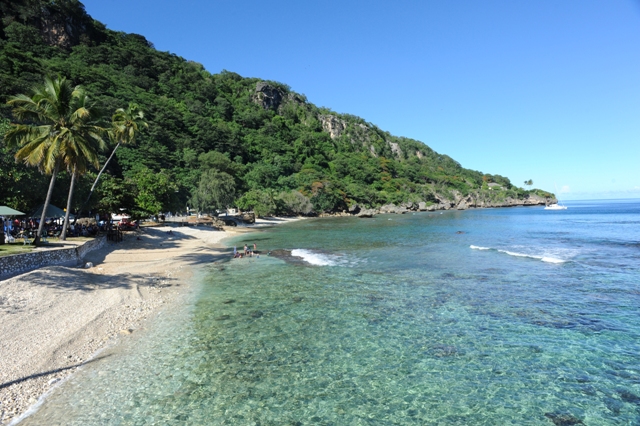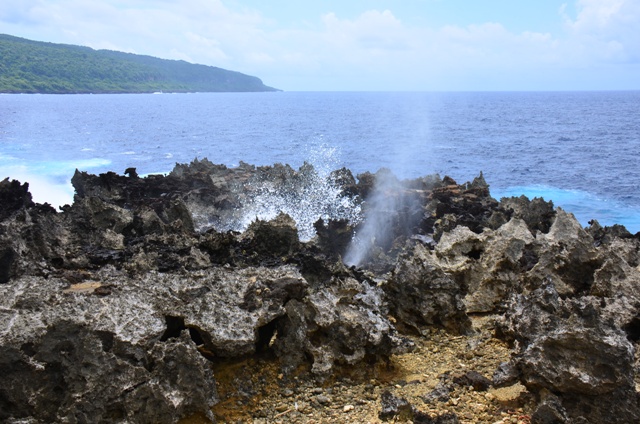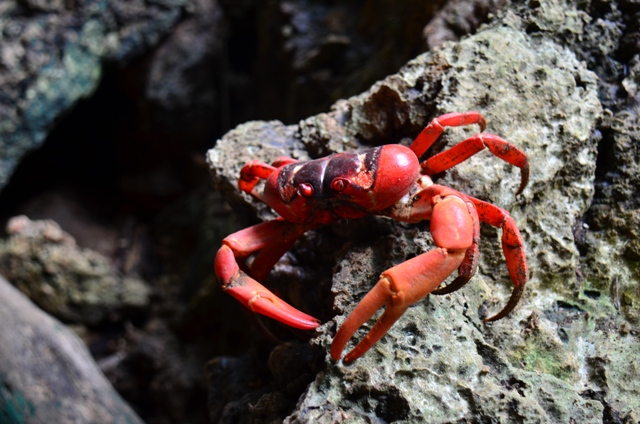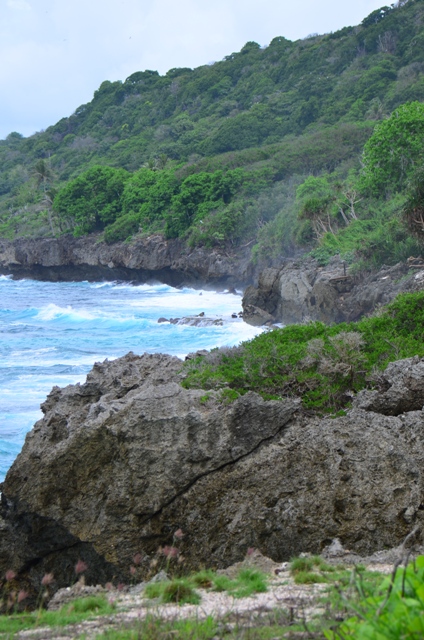Feeling crabby? Join Editor Chad Merchant as he explores the Australian Territory of Christmas Island, meets the island’s most famed resident, The Red Crab, and discovers why this isolated island in the Indian ocean is known as a natural wonderland.
Though its closest neighbour is the Indonesian island of Java, some 500km to the north, and though the character of the multicultural community is more akin to Malaysia than anything, Christmas Island is indeed an Australian territory. Most Malaysian residents are unaware that they can be in Australia on the easy wings of a 2.5-hour flight from Kuala Lumpur, yet thanks to a weekly charter flight from Malaysia Airlines, it’s true.
One of the great draws of living in Malaysia is its location in the region, which is further served by a comprehensive network of air routes. We are indeed fortunate because the small Indian Ocean patch of land called Christmas Island is also easily accessible from KL, the only city outside of mainland Australia to offer air service to this remarkable and unique destination.
If you’re seeking a party island, or want the quintessential white-sand tropical isle, Christmas Island is not the ideal port of call. However, for divers, photographers, nature lovers, and people who simply need to unwind and relax, Christmas Island is perhaps unequalled in the region. This island, with roughly half the land area of the city of KL, is merely the tip of an iceless iceberg, the above-water portion of a massive submarine volcanic mountain. The volcano is long since extinct, but what remains is a parcel of land that, owing to its geographic isolation and a long species of plants and animals and offers an equally unique travel experience.
From Discovery to Development
Now, that’s not to say the island is pristine and undeveloped. Far from it, actually. As our Malaysia Airlines 737 dipped down on its descent to the Christmas Island, I was quite surprised to see how developed the infrastructure actually was on this remote island. Though Christmas Island was discovered (and thusly named) on Christmas Day in 1643, it wasn’t until some 45 years later that seafarers were able to successfully land on the island and start exploring it. Fast-forward two centuries or so to the time when vast reserves of phosphate were discovered on the island. With this finding, the settlement and development of the island became financially feasible, and thus it was made so, and it is this mining activity that not only gave a foundation to the island’s economy, it directly contributed to the quality of the infrastructure that is still in place today. Quality roads and pathways, hot and cold running water, reliable not always what you expect to find on a remote island, but very much the case here. Following the defeat of the Japanese, who occupied this island during WWII, the island was under Singaporean auspices as part of the UK Straits Settlement. In 1957, Australia petitioned the UK for transfer of sovereignty and paid £2.9 million to Singapore as part of the agreement, and in 1958, the first official representative of the Australian government arrived on the island, and with that, Christmas Island officially became an Australian territory.

Today, the island economy is largely dependent upon phosphate mining and a busy detention centre, the latter of which may lead people to incorrectly think that a penal colony exists on the island. Actually, it’s simply a “holding facility” for refugees and their families who are seeking approval to live in Australia. While they are being processed, they are detained on a small part of the island, under a programme administered by Aussie immigration services. Most tourists to the island will never see any evidence of this centre as it’s many kilometres from the main tourist areas. Nevertheless, the refugees are permitted – with supervision – to mix and mingle with the island’s small resident population at events and such. As the island’s primary workers were drawn largely from Straits cities such as George Town and Melaka, there is a distinct feel of Malaysia on Christmas Island. There are communities of Chinese and Malay settlers, as well as European/Aussie residents. As in Malaysia, the closely connected islanders respect the religions and traditions of others and, of course, enjoy each other’s holidays and festivals. Quite unlike Malaysia, however, they all seem to know each other, too! With only about 1,400 full-time residents on the island, it’s a tight-knit community, and there’s a genuine warmth among the people and their love for their little island is evident from even a short chat with any of them.
Land, Sea, And Air: A Natural Wonder
Christmas Island is, of course, famous for its annual migration of Red Crabs, an endemic crab species on the island. Every year, millions of the bright red crabs make their way from the jungles to the sea as part of their mating ritual.
If youtime your visit right, you’ll see these crabs by the thousands in one of nature’s most impressive mass migration spectacles. Some 50 million of these crabs are estimated to live on Christmas Island. Perhaps even more impressive is the world’s largest population of the coconut crab, more commonly called the robber crab. This the largest terrestrial arthropod in the world, and about a million are thought to live on the island. They live mostly in the forested areas of the island and can be the size of a football. They are prodigious climbers and can be incredibly determined and resourceful when trying to get t something they fancy, hence their “robber” reputation.
Christmas Island’s natural wonders aren’t limited to land animals, either, not by a long stretch. Bird lovers will find their Nirvana here, as freewheeling frigatebirds, red-footed boobies, and the stunning endemic golden boson are all frequent sights. Over 80,000 seabirds nest here annually, and with no land at all south of Christmas Island until one reaches the Antarctic continent, this lone speck of land in the vast Indian Ocean is a haven for many wings. With nearly two-thirds of the entire island set aside as an Australian National Park, all these birds have a great deal of room to spread their wings with no human interference.
Divers and snorkelers will be captivated by the undersea world here. The waters are breathtakingly clear and pollution-free, generally hovering around 27°C year-round. Not far from the rocky limestone shores of Christmas Island, the seafloor drops 500m in short order, then plunges even more precipitously into the depths of the Java Trench, the deepest part of the Indian Ocean. This dramatic shift of the underwater landscape lends itself to spectacular biodiversity, from vast spreads of stunning coral reefs with their attendant hordes of colourful reef fishes, sponges, and crustaceans to the open ocean, patrolled by pelagic fishes such as tuna, barracuda, and trevallies. Sport fishes including marlins and swordfishes are also present, as is the majestic whale shark, the largest fish in the world. At the right time of the year here, divers will usually have an outstanding chance to encounter these magnificent, gentle sea giants.
It must be said that the focus on Christmas Island has only recently turned to tourism, but they seem to understand that the phosphate reserves here will not last forever and that sustainable tourism is a critical part of the island’s future. The unique nature of Christmas Island offers much, particularly to the ecotourism market, and for anyone with a zeal for nature and a sense of adventure, this is a destination that offers a host of memorable experiences; indeed, some of which cannot be replicated in any other location. Enjoy the crab migration, be mesmerised by the seabirds, take to the greens to enjoy a round of golf on the island’s gorgeous seaside course, visit the blowholes – one of my favourite natural spectacles – on the island’s coast, enjoy a drink with the locals, and just slow down. Christmas Island gives the city dweller a welcome tonic for stress and offers an enjoyable holiday experience for those willing to take the plunge.
———————————————————————————————————
Getting There:
Weekly chartered flights are available via Malaysia Airlines. This is the only direct flight to Christmas Island from Asia and takes 2 hours 35 minutes. For more information, or to book a flight or holiday package, contact the professionals at KRIS International Traveltours in Bangsar on +603.2282 2580, or their website at www.krisinternational.com.
Immigration:
Customs and immigration responsibilities are handled by Australia. A visa is required (Electronic Travel Authority) unless you hold a New Zealand passport. Some nationalities may apply for this visa online at www.immi.gov.au/e_ visa/visitors.htm. Christmas Island takes customs and quarantine very seriously, so be mindful of this. The island’s ecosystem is delicate and isolated, so they’re keen to keep it healthy and natural. Don’t bring any seeds, fruits, animal products, etc.
Information:
Christmas Island is one hour behind KL time (GMT +7). As an Australian territory, driving is on the left, and cars, 4WDs, and scooters are available for hire. Care must be taken, as crabs often cross the road, and fines for wilfully or negligibly running them over are substantial.
Voltage is 220v and the plugs are Aussie-style, with angled blades, so bring an adapter.
As an isolated island over 2,500km from the Australian mainland, goods and services are relatively expensive, but not prohibitively so. It is hoped with the island’s evolving shift to tourism, that competition and economies of scale will bring costs down. Look for package deals to get the best value.
Currency is the Australian dollar (AUD). Malaysian Ringgit are not accepted and there are no moneychanging facilities on the island, so change your currency before you come. Credit cards are widely accepted and there are a couple of ATMs around, though it’s probably safer to have your cash sorted ahead of time.
Experienced, knowledgeable local guides are available for hire and are highly recommended. A wonderful visitors’ centre is maintained on the island by the Christmas Island Tourism Association and the friendly staff can assist with everything from arranging a visit to planning and booking activities once you’ve arrived. Visit their website at www.christmas.net.au.
———————————————————————————————————
Source: The Expat February 2013
Read more:
- Lone Pine Hotel: Leisure Done Right in Penang
- An Unforgettable Business Class Trip On-board the A380
- The Mystical Curiosities of Hong Kong
What are your thoughts on this article? Let us know by commenting below.No registration needed.
"ExpatGo welcomes and encourages comments, input, and divergent opinions. However, we kindly request that you use suitable language in your comments, and refrain from any sort of personal attack, hate speech, or disparaging rhetoric. Comments not in line with this are subject to removal from the site. "

























